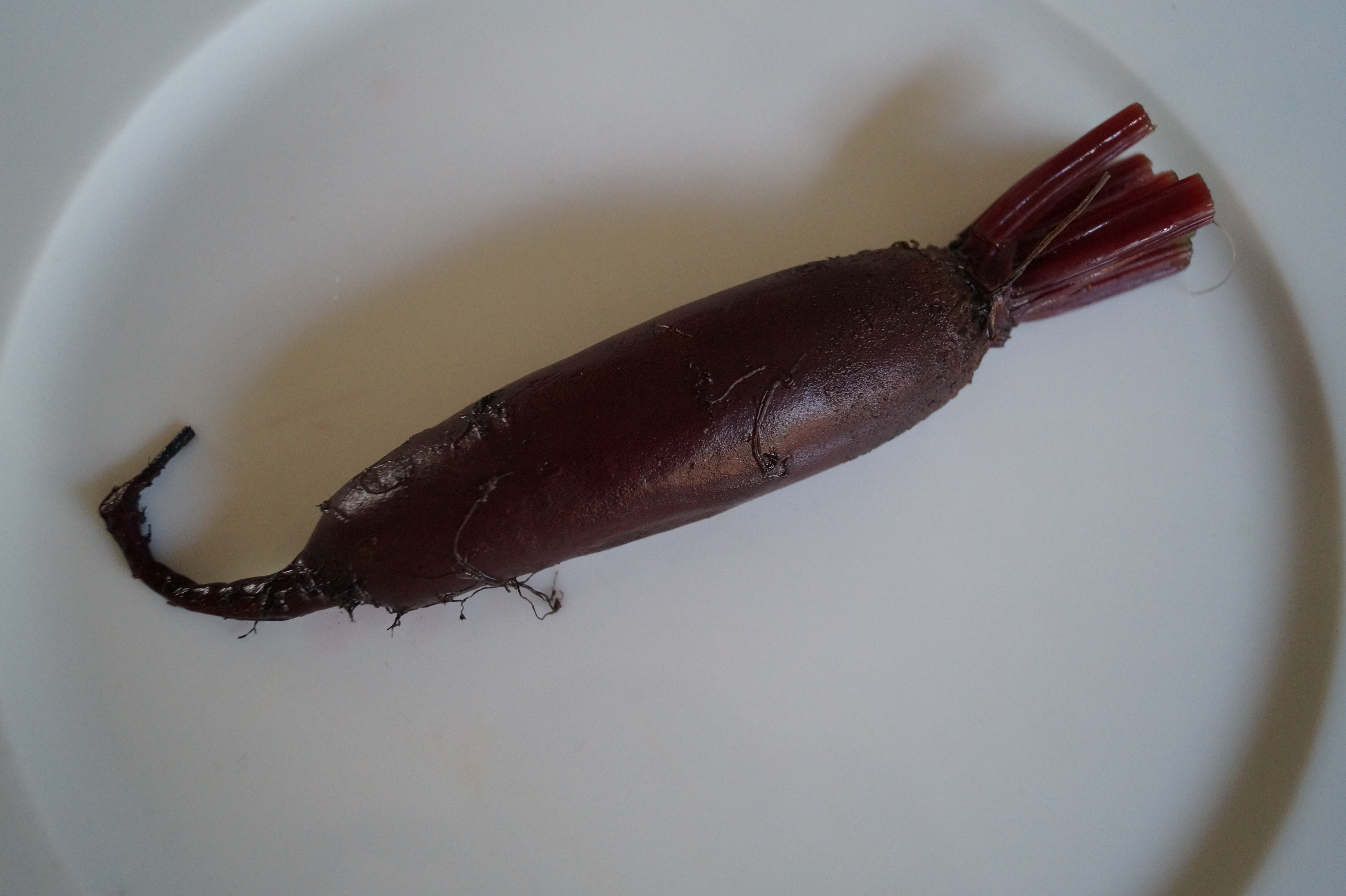The greatest vegetable of all times (don’t tell the tomatoes)
Nothing says Eastern Europe to me as this one single vegetable. The Dutch learn to cycle before they walk, we eat borscht before we develop teeth. Scrumptious, delicious, versatile, beetroot is completely underestimated and underused here in the West. People seem actually scared of it, their main association being that with a soggy, sharply acidic tinned variety.
Beta vulgaris, what a horrible name. Beetroot deserves so much better. Sweet and rich in colour, flavour and texture, as well as in potassium, vitamin A, iron, folic acid, magnesium, nitrates, and betanin, that powerful anti-oxidant responsible for the gorgeous colour. The earthiness is an acquired taste, I know, but not all varieties taste earthy anyway.
Much as I would like to say that beetroot is my childhood love, that’s not really true. I didn’t like it when I was little. I wasn’t a fan of borscht either – a rare child is. My daughter once famously said she liked going away on holiday mostly because that meant I did not cook borsht. But I love my beetroot soup now, with the darkest bread possible and lots of garlic. In denial – perhaps in confirmation – of my exiled status. I stubbornly put it on the table in front of my children every few weeks, lest they forget their Slavic roots.

I think of borscht as a very Ukrainian dish, although don’t tell a Pole I said that. But the Polish version is much thinner, and served differently. In Russia, a white cabbage version is more popular, to the point of the cabbage taking over the place centrestage. Over the centuries, borscht has become an almost indispensable Passover dish for Ashkenazic Jews. The “real” recipe is contentious down to the last detail. A question whether to put a dollop of smetana (sour cream) into the main pot or into each individual bowl is known to have split families. There are as many borscht recipes as there are babushka’s in the ex-Soviet space. An underestimation still, because there are still countless babushka’s cooking borscht in Brooklyn alone.
But it would be unfair to confine beetroot to borscht alone. So versatile, beets are used in many Eastern European dishes. A favourite now of my Dutch husband, an unusual but stunning combination, a salad, which for some unfathomable reason is called “Cuban” (perhaps it was exotic enough in a rather bland Soviet diet and Cuba was our closest “exotic” friend, who knows): cooked and diced beetroot mixed with walnuts, minced garlic, sour cream and a bit of mayo. Another New Year’s Eve staple for millions of households across the former USSR states and beyond – the “Herring under a coat”, where the fish is hidden under layers of cooked and julienned vegetables, among which beetroot plays the most prominent role. Then there is the “Vinaigrette”, which has little to do with its namesake, the traditional dressing and which is in fact an essential winter vitamin blast – beetroot, carrots, sauer-kraut, onions, beans and pickled gherkins. Then there is of course the beetroot kvass, a sweet-sour fermented drink – I may give the Poles that one.
My new allotment would be unthinkable without beetroot. While tomatoes completely stole the limelight this year, it was mostly due to the energy and the time we spent on their care – re-potting, pinching, staking, tying, feeding, watering. Talking about them! Trying to come up with recipes for the abundance of them over July and August. It has been very different with beetroot. It kind of felt immediately at home and took care of itself. For a few weeks in the middle of the summer all I had to do was to pull out perfectly formed roots from the vegetable bed. A friend had brought me an interesting variety from Poland – cylindrical, very tender, very intense, jewel-like colour, virtually ringless and very, very sweet. They cook fast and the skin comes off almost in a snake-like fashion, you can slide it easily off with your fingers, not losing any of the precious flesh. My fingers would be stained for days. I ventured far from my comfort zone in cooking and made beetroot tarte tatin with goat cheese. I pickled beetroot in a sweet-sour brine with star anise, cloves, bay leaves and allspice.


I have even drawn it – my first watercolour in over 30 years.
Then I read that the first traces of beetroot cultivation in Europe were apparently found on a Neolithic site in the Netherlands. Who would have thought? It is an hour drive from here. And this seemingly random fact about my favourite vegetable makes me feel that tiny, tiny bit more at home. More…rooted.






A lovely article that will spur me on to like this ‘scary’ vegetable and give it another try !
I am keeping some pickled beetroot for you! 😉
I agree with the previous comment : what a lovely post ! Can I confess to not liking beetroot ? Though I now suspect that is mainly because of the sempiternal school dinner’s beetroot salad (often accompanied by an even worse celery mixture) I spent much time trying to avoid. I haven’t had the chance to taste all those “appétissantes” recipes you sing here ! And I am very impressed with your watercolour !
Thank you, dear Frog! Indeed, I wish I could have you try my mother’s borscht to change your opinion on beetroot… Maybe I can at least post the recipe (although even I can’t quite replicate it). And thank you for your compliment on the watercolour, it was followed only by a painting of a zucchini, and then the summer suddenly ended..